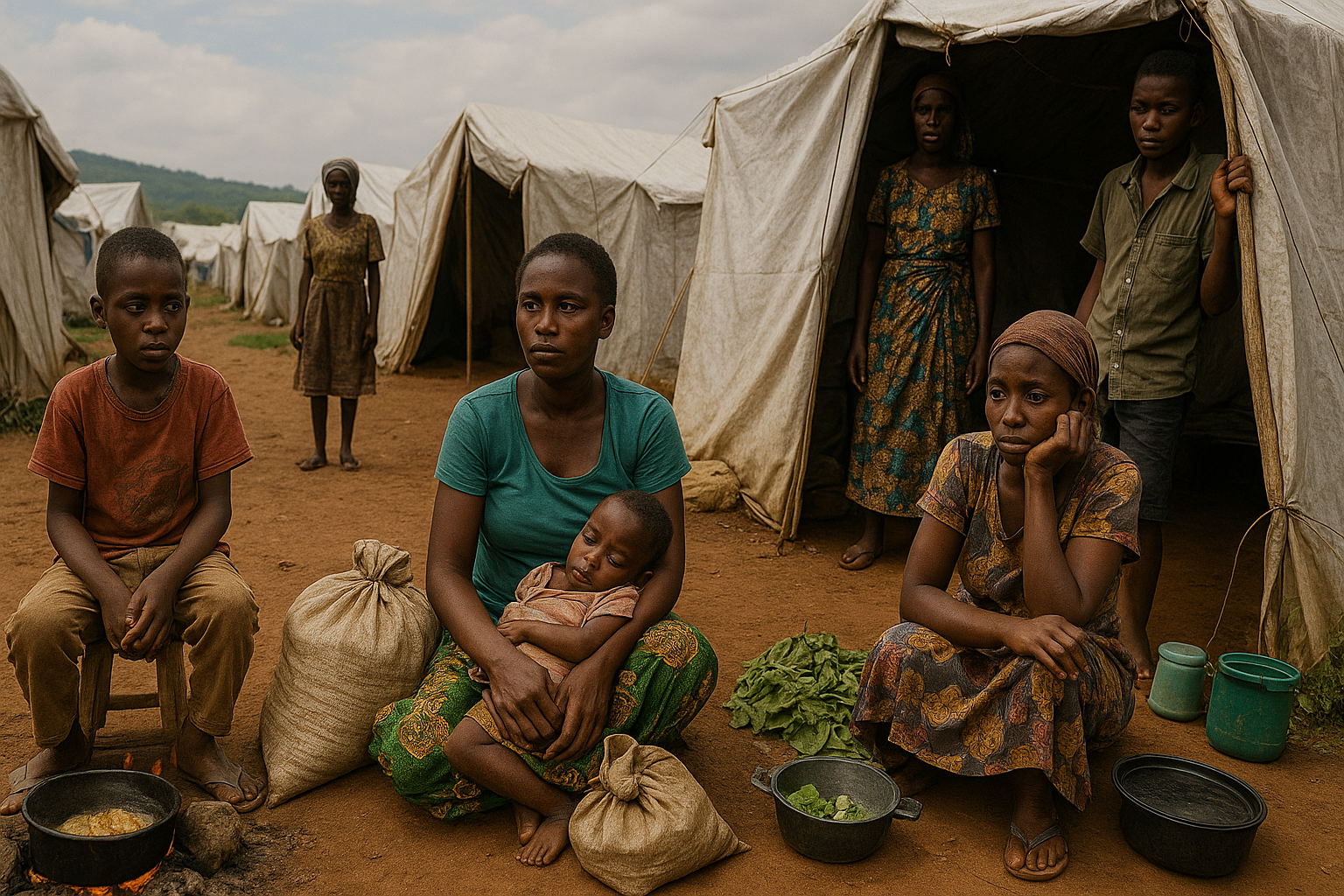Sustaining Hope: How Rwanda’s Refugees Are Coping with Daily Hardships and Needs
A World Bank-led survey reveals that most refugees in Rwanda face severe food insecurity, underemployment, and low income, with only 27.4% achieving minimal self-reliance. Urban refugees in Kigali fare better, highlighting the need for targeted, long-term development strategies.

A groundbreaking report by the World Bank, in collaboration with Rwanda’s Ministry in Charge of Emergency Management (MINEMA), the United Nations High Commissioner for Refugees (UNHCR), and the World Food Programme (WFP), provides a nuanced, data-rich exploration of refugee life in Rwanda. Titled Sustainable Livelihoods of Refugees in Rwanda: Results from a Survey and Self-Reliance Measure, the study draws from two rounds of large-scale household surveys conducted in 2024 and 2025. It aims to inform policy and guide implementation of Rwanda’s forthcoming Refugee Sustainable Graduation Strategy (2025–2030), offering critical insights into how refugee communities are faring economically, socially, and nutritionally, and what can be done to improve their path to sustainable self-reliance.
A Complex Demographic Landscape
The survey sampled over 2,000 households in each round, representing approximately 117,000 individuals after applying population weights. It covered Rwanda’s five main refugee camps, Mahama, Kiziba, Kigeme, Mugombwa, and Nyabiheke, as well as the urban area of Kigali. Nearly half of all refugee households live in Mahama camp, with another 17 percent in Kigali. While Mahama and Kigali are predominantly home to Burundian refugees, the other camps mostly host refugees from the Democratic Republic of Congo (DRC).
The demographic data underscores a distinct urban-rural divide. Refugee households in Kigali tend to be smaller, more male-dominated, and contain more working-age adults, whereas camp households are larger and more likely to include children. Over 40 percent of households in Mugombwa and Nyabiheke have seven or more members. By contrast, nearly half of Kigali’s refugee households consist of just one or two people. The duration of displacement is also striking; refugees in Kiziba, for example, have been in Rwanda for more than 20 years, indicating the protracted nature of their situation.
Education and Health: Strengths Amid Hardship
Despite the many challenges refugees face, education emerges as a relative bright spot. School attendance rates among children aged 6–11 are nearly universal, while attendance for those aged 12–17 hovers around 95 percent, figures that surpass those for non-refugee Rwandans. However, educational attainment in adulthood remains uneven. Only 30–35 percent of adults in camps have completed upper secondary education, compared to 60 percent in Kigali.
Health conditions present a more troubling picture. Around 35 percent of households include at least one member with a chronic illness, and one in five report health conditions that interfere with income-generating activities. Yet, health service coverage is generally strong, with most refugees enrolled in Rwanda’s national community-based health insurance program, Mutuelle de Santé. Access is uneven, though: about 25 percent of refugees in Mahama and Kigali reported facing barriers to healthcare, such as cost or transportation issues.
Food Insecurity: A Daily Struggle
Food insecurity is one of the most severe challenges facing refugee households. Over 60 percent of camp-based families report consuming just one meal per day, with Kigeme peaking at 74 percent. In contrast, only 36 percent of urban refugees in Kigali report this level of dietary limitation. According to the Food Consumption Score, 90.8 percent of households fall into the “poor” or “borderline” nutritional categories. These metrics are deeply concerning, as they indicate widespread reliance on harmful coping strategies like skipping meals, limiting food portions for adults to favor children, or borrowing food.
The primary reasons for meal skipping vary: in the camps, it’s overwhelmingly due to the lack of food availability, while in Kigali, financial constraints take the lead. Nearly every household in the camps of Kiziba, Mahama, and Kigeme resorts to moderate or severe coping mechanisms, illustrating the fragility of food access for displaced populations.
Employment and Income: Underemployment and Dependency
Economic independence remains elusive for most refugee households. Labor force participation is just 28 percent, and the employment rate stands at 21 percent, dramatically lower than the national average of 53 percent. Employment conditions are precarious: the majority of those who do work are on daily contracts, with many reporting less than 10 days or 10 hours of work per month. This underemployment contributes to poverty and dependency.
Income levels paint an equally stark picture. In the camps, more than 80 percent of households earn less than FRW 30,000 per month (around USD 20), with some camps reaching 90 percent. Savings are virtually nonexistent, and many urban households struggle to pay rent. Only 15 percent of refugee households earn more than FRW 60,000 monthly, a threshold used in the study’s self-reliance analysis.
Measuring Self-Reliance: A Roadmap for Policy
To better assess the resilience of refugee households, the report introduces the Rwanda Self-Reliance Measure (RSRM), developed with MINEMA, UNHCR, and WFP. This composite index evaluates household capacity across seven dimensions: income, labor, education, health, food security, housing, and social capital. Each dimension is scored, and households are categorized as low, moderate, or highly self-reliant based on thresholds set at 50, 60, and 70 points, respectively.
The results are sobering. Only 27.4 percent of households meet even the lowest self-reliance threshold. In the camps, fewer than 20 percent qualify, while Kigali performs significantly better, 22.5 percent of urban households are classified as highly self-reliant, buoyed by better education, smaller families, and more consistent income. Burundian refugees, many of whom reside in Kigali, show better self-reliance scores than their DRC counterparts.
The findings of the RSRM are now being used by the Rwandan government to shape the 2025–2030 Refugee Sustainable Graduation Strategy. This tool enables policymakers to go beyond generic aid models and target specific areas, such as nutrition, income generation, or education, for tailored interventions. Ultimately, the report underscores the need for an integrated, multisectoral approach that transitions from short-term humanitarian relief to long-term development and resilience-building, while recognizing the diverse capacities and needs of refugee communities across Rwanda.
- FIRST PUBLISHED IN:
- Devdiscourse










